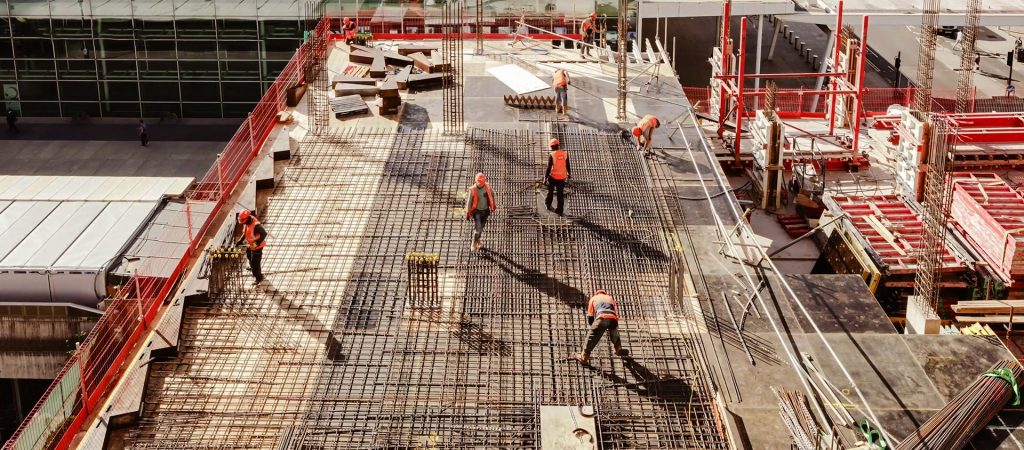
Embracing AI: reducing operational downtime in rail
With recent disruption, customer experience ratings have dropped, with delay compensation schemes becoming routinely used by many passengers. But what role could AI play in delivering improvements?

In previous blogs we explored the related topics of ‘How can cost reduction and control lead to double-digit margins for construction firms?’ and ‘How do you improve productivity and pace on construction projects?’. But, with the UK construction sector now recovering at pace, infrastructure investment reported to be ‘booming’ and the immediate pressures that emerge as a result of material shortages (as backed-up recently by the Civil Engineering Contractors Association), it would be all too easy for construction business leaders to focus attention on the urgent challenge while taking their eyes off the ball when it comes to the important opportunities still ahead of them to both improve and control costs for the longer-term.
To make sure this chance for more profitable growth is not squandered, what is needed is a well-structured and co-ordinated cost transformation programme which turns a business’s mass of operational and supply chain data into actionable intelligence and informs a framework for unlocking and implementing well-targeted insight-driven improvements.
For leaders of construction firms, I outline three foundations for successful cost transformation programmes:
When driving any aspect of major change in a business, the first (and most important) requirement for visible leadership is common knowledge … but this is often neglected! Throughout a cost transformation programme, leaders must be seen to be continually emphasising ‘Why’ there is an imperative to improve and control costs, to be encouraging open and regular dialogues on ‘What’ and ‘How’, to be getting out to see what is happening on the ground and to be confirming first-hand that processes and practices are working efficiently – while continuously recognising and publicly praising successes.
Successful cost transformations are built by visible and supportive leaders who create the ambition and organisational alignment, as well as getting actively involved to help enable and embed the change through their words but more importantly their actions – the transition will not happen by osmosis. What is required from the outset is an effectively choreographed change programme which engages the people surrounding those leaders – held together through a clear vision and communications, supported by change agents, with unambiguous measures and cost targets to retain focus, together with deliberate strategies to make the changes stick through embedding new ways of working.




In crafting the programme and engaging support, be aware of falling into the common traps of focusing solely on the application of tools and systems; looking for a tried and tested ‘silver bullet’; or following unquestionably those who claim to have the ‘one best way’ or an overly prescriptive approach. It is important to remember that each organisation must forge its own unique path and multiple levers will need to be pulled along the way.
Having said that, an important place to start is with your organisational costs and data from previous projects, from which data analytics and expertise can unlock new insights to inform where to focus your efforts, in what order and at what pace – looking both internally, by challenging all aspects of your business operations, and by targeting wider opportunities across the supply base e.g. informing value engineering and fact-based (target cost) negotiations with existing and potential new suppliers. First, put in place the associated measures, cost targets and plans; and then bring them to life through daily management routines across all your teams to better control expenditure and all decisions that impact cost.
But do not stop there! Achieving a step change in costs requires moving swiftly on to upskilling your teams to perform structured and well-targeted problem solving. This takes effort but the good news is that, as teams get closer to understanding the true (root) causes of their costs, they will uncover new and practical solutions. But it is important to move at pace. Treat the hurdles uncovered as opportunities, solve them as teams and take decisive leadership action.
Keep the approach as simple as possible and be prepared to continuously review how it is going to make the implementation easier, better, faster and thereby cheaper in itself. If the belief in ‘Why’ change is necessary has been firmly established and the visible leadership support and programme structure is genuinely there – with insights, measures, targets and problem-solving routines established – yet teams are still not adopting the new more cost-effective ways of working, then it is often because: (a) the new approaches are overly complicated – so they should be simplified and made easier to aid adoption, (b) there is insufficient belief that the new ways are more cost-effective – so they should be challenged again and proven, or (c) they are being implemented too slowly – so they should be rolled-out faster and old ways of working deliberately removed.

The success of cost transformation programmes is determined ultimately by the behaviours of its leaders. So, as the construction sector recovers, cost reduction and control must receive constant and visible leadership attention to put construction businesses and the entire sector on a firmer footing for the future. Leaders must make sure that cost stays right at the top of the firm’s strategic agenda; continuously articulate ‘Why’ cost is important; set targets, maintain focus on tracking and realising results; and ensure a continued improvement in cost performance right across the organisation – critically, while visibly demonstrating the enabling behaviours, and communicating and celebrating successes.
The opportunities to achieve double-digital margins in construction are there to be unlocked and the truly successful businesses are those that can demonstrate that their teams – by being led and engaged in the right way through an effective cost transformation programme – are actively contributing to realising them.
Get in touch
Related Insights

With recent disruption, customer experience ratings have dropped, with delay compensation schemes becoming routinely used by many passengers. But what role could AI play in delivering improvements?

Train operating companies are under pressure to deliver a consistent positive experience, all while attempting to modernise. But how can this happen and could the Rail Reform Bill help?

As the industry prepares for the launch of Great British Railways (GBR), there is an opportunity to improve operational efficiency, reduce cost and improve passenger services.
Subscribe to our newsletter